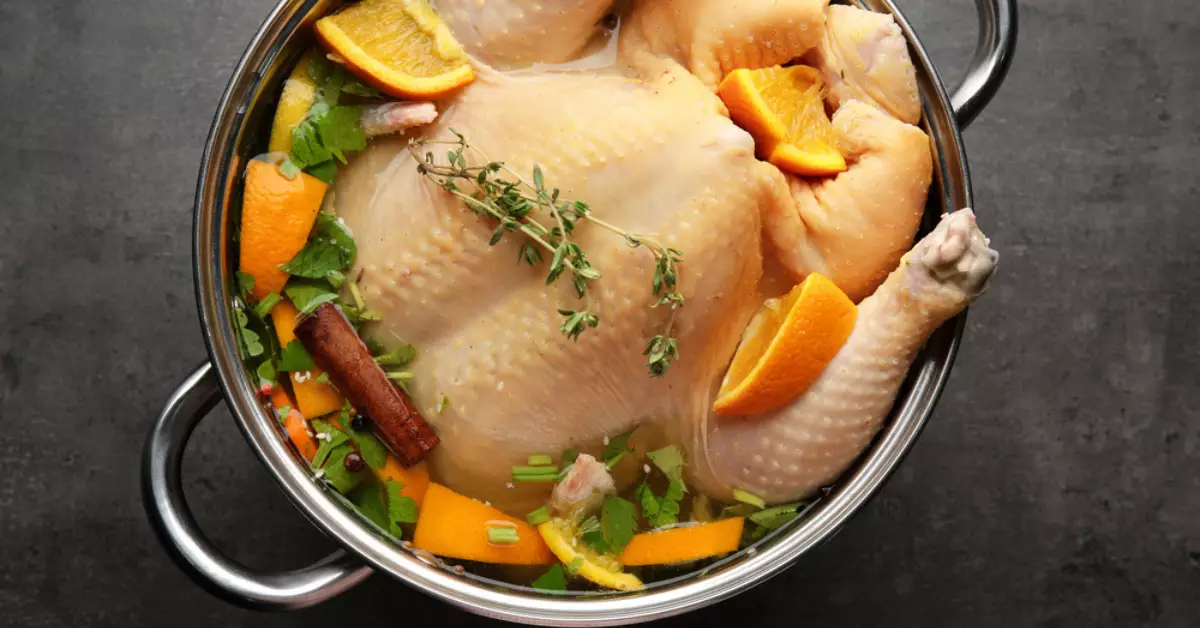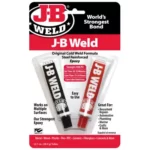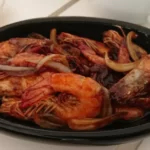In the culinary world, both brining and injecting are popular methods to increase the flavor and moisture of meats, particularly turkey. These techniques are often employed to ensure a tender, juicy, and flavorful bird, especially during holiday feasts.
A turkey can be transformed into a delightful main course through brining, a process involving soaking the bird in a mixture of water, salt, and various seasonings. On the other hand, injecting involves inserting a solution directly into the meat, which typically contains elements similar to a brine but may also include fats or broths.
Both techniques hold their distinct roles. While brining aids in moisture retention and flavor enhancement, injecting allows the flavor to penetrate deeper into the meat, ensuring every bite is packed with taste.
Difference Between Brining and Injecting
Brining vs. Injecting: A Comparative Overview
Brining is a technique where the turkey is soaked in a solution of water, salt, and other flavorings. The salt in the brine denatures the protein in the turkey, allowing it to absorb more moisture. This process helps to season the bird from within and keeps it juicy during cooking.
On the contrary, injecting is a more direct method of introducing flavors into the turkey. A seasoned solution is injected straight into the meat using a special syringe. This method allows for deeper flavor penetration, especially in thicker parts of the bird like the breasts and thighs.
Advantages and Disadvantages
Brining helps to keep the turkey moist and enhances its natural flavors. However, it requires a large amount of space in the refrigerator and considerable preparation time.
Injecting provides a quicker way to introduce flavors and moisture directly into the meat, but it requires special equipment. Additionally, the flavors may be unevenly distributed if not done correctly.
Can You Brine an Already Injected Turkey?
The Effect of Brining on an Injected Turkey
If you’ve got a turkey that’s already been injected with a solution, brining can still be a viable option. Injecting the turkey infuses flavors into the meat itself, while brining enhances the overall moisture and surface flavor. When these two techniques are combined, the turkey tends to retain more moisture during the cooking process, making it extra succulent and juicy.
In essence, brining doesn’t just add moisture to the turkey; it changes the turkey’s cell structure. The high salt concentration in the brine breaks down the proteins in the turkey’s muscle fibers, allowing them to absorb and retain more moisture. The process of osmosis pulls the salty brine into the turkey, and as the bird cooks, this liquid heats and steams from the inside, resulting in a moist, flavorful bird.
Why Some Prefer Brining an Injected Turkey
Brining an injected turkey can add an additional layer of flavor, making the meat even more savory and delicious. Some individuals find that while the injected solution adds flavor deep into the meat, a good brine can also add surface-level taste and enhance the turkey’s natural flavor.
While the injection targets specific parts of the turkey like the breasts and thighs, brining affects the entire bird. This means the skin, legs, wings, and all the nooks and crannies get seasoned. When you bite into a piece of brined and injected turkey, you’re getting flavor from both the inside and outside.
Key Considerations When Brining an Injected Turkey
Pre-Brined Turkeys: What to Know
Not all injected turkeys are equal. Some turkeys are labeled as “self-basting” or “enhanced” with a solution already injected into them. These turkeys have been pre-seasoned, often with a salt solution, to help keep them moist and flavorful.
While it’s not harmful to brine a pre-seasoned turkey, it might not be necessary, and you run the risk of ending up with a turkey that’s too salty. Always check the label to see if your turkey has been pre-seasoned or enhanced.
Injected Turkey: Understanding the Process
When a turkey is injected, a solution is pushed directly into the meat using a syringe-like tool. This solution can consist of various ingredients, such as salt, sugar, natural flavorings, and even fats.
Injecting is typically done to make the turkey juicier and add flavor, but it does not provide the same even seasoning that brining does. The solution is often concentrated in specific areas where the injection was administered, which can lead to uneven flavor distribution.
Key Factors to Consider When Brining an Injected Turkey
If you decide to brine a turkey that’s already been injected, consider the following:
- Brine Concentration: The concentration of salt in your brine is crucial. Too much salt can result in a turkey that’s too salty, while too little might not have much of an effect.
- Brining Time: The length of time the turkey spends in the brine is also important. The longer the turkey is in the brine, the saltier it will become. A general rule of thumb is to brine for 1 hour per pound of turkey, but this will depend on the concentration of your brine.
- Rinsing After Brining: It’s essential to rinse the turkey thoroughly after brining to remove excess salt from the surface. This will help prevent the turkey from becoming too salty during cooking.
- Type of Salt: Always use kosher salt or sea salt for brining. Table salt has additives and a stronger flavor that can affect the outcome.
Step-by-Step Guide to Brining an Injected Turkey
Ingredients Needed for Brining
A simple yet effective brine for turkey consists of water, salt, sugar, and other optional flavorings. Here’s a list of what you’ll need:
- 1 gallon of water
- 1 cup of kosher salt
- 1 cup of sugar (optional)
- Seasonings and herbs such as black peppercorns, bay leaves, garlic cloves, fresh rosemary, and thyme
Brining Process Explained
- In a large pot, combine the water, salt, sugar, and other flavorings.
- Bring the mixture to a boil over medium-high heat, stirring until the salt and sugar have completely dissolved.
- Remove the brine from the heat and let it cool completely.
- Once the brine is cool, place the turkey in it, making sure the bird is entirely submerged. If needed, you can weigh the turkey down with a plate to keep it fully immersed.
- Cover the pot and put it in the refrigerator. The turkey should brine for at least 1 hour per pound.
- After the brining process is complete, remove the turkey from the brine and rinse it thoroughly under cold water. This will wash off any excess salt and seasonings.
- Pat the turkey dry with paper towels, then it’s ready for roasting.
Potential Results of Brining an Injected Turkey
The Flavor Profile: What to Expect
Brining an injected turkey can significantly enhance its flavor. The combination of the injected solution and the brine gives you the best of both worlds – intense, deep flavors from the injection, and a subtle, savory, and complex taste from the brine.
The resulting flavor profile will depend on the ingredients used in both the injected solution and the brine. Using complementary flavors in the injection and the brine can create a more harmonious and delicious turkey.
Texture and Moisture: Evaluating the Impact
The injected solution and brine work together to keep the turkey moist during the cooking process. The injection provides internal moisture, while the brine helps to hydrate the turkey’s outer layers and lock in the juices.
This dual-action technique leads to a turkey with a juicy interior and a moist, flavorful exterior. The salt in the brine also helps to tenderize the turkey by breaking down the protein structures, leading to a smoother and more tender texture.
FAQs About Brining an Injected Turkey
Is it necessary to rinse the turkey after brining?
Yes, it’s a good practice to rinse the turkey after brining to remove any excess salt from the surface. Ensure to pat it dry before cooking.
What happens if you over-brine a turkey?
Over-brining can make the turkey too salty. If the turkey has already been injected with a salty solution, you should adjust the brining time and salt concentration accordingly.
Can you brine a frozen turkey?
Yes, you can brine a frozen turkey. However, it will take longer for the brine to penetrate the meat, so consider this in your preparation time.
Conclusion
Brining an already injected turkey can be an excellent method to elevate the flavor profile and improve the texture of the bird. It’s crucial to understand the nature of the injected solution and adjust your brining method accordingly to avoid over-salting.
It’s all about finding a balance that works for your personal taste. Whether it’s enhancing an already injected turkey with a homemade brine or sticking with the injected flavors, each method has its unique benefits that can contribute to a delectable, mouth-watering turkey.
Remember, the goal is a succulent, flavorful turkey that leaves a lasting impression on your taste buds and creates fond memories around the dining table. Enjoy the process, and don’t be afraid to experiment with different flavors and techniques. The journey to culinary mastery is paved with trials, errors, and delicious victories. Happy cooking!







